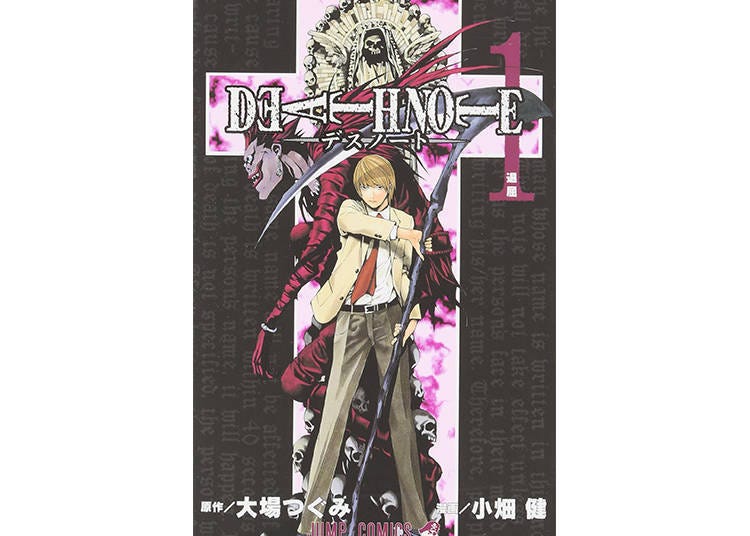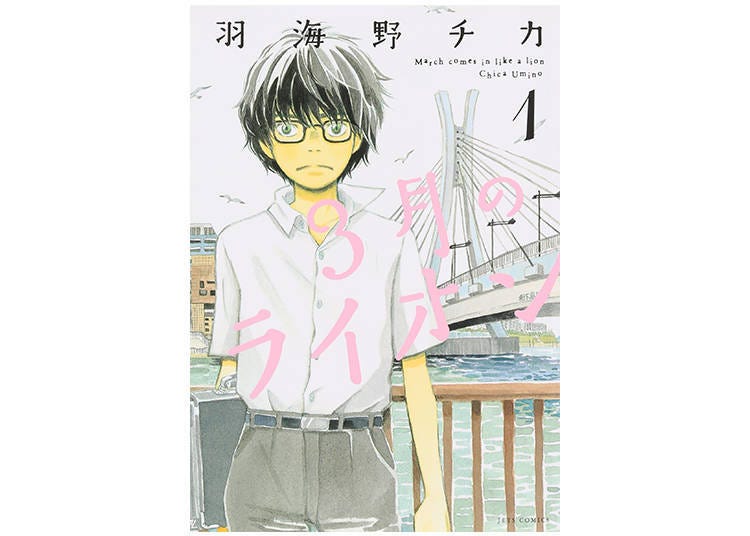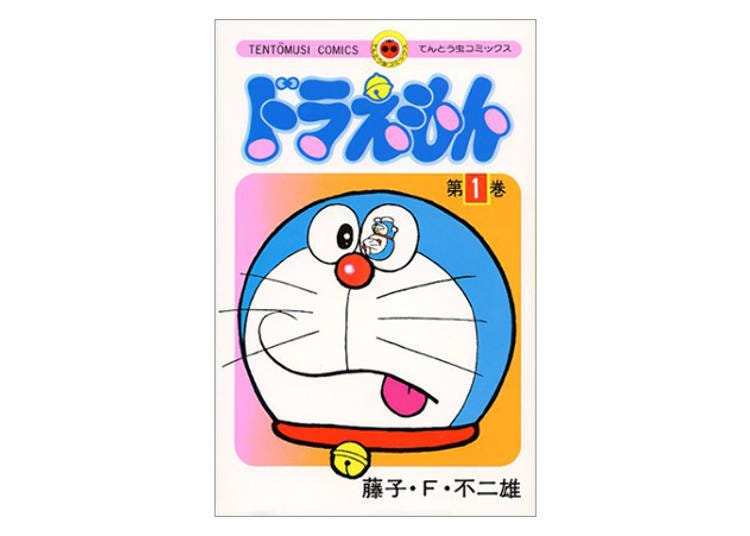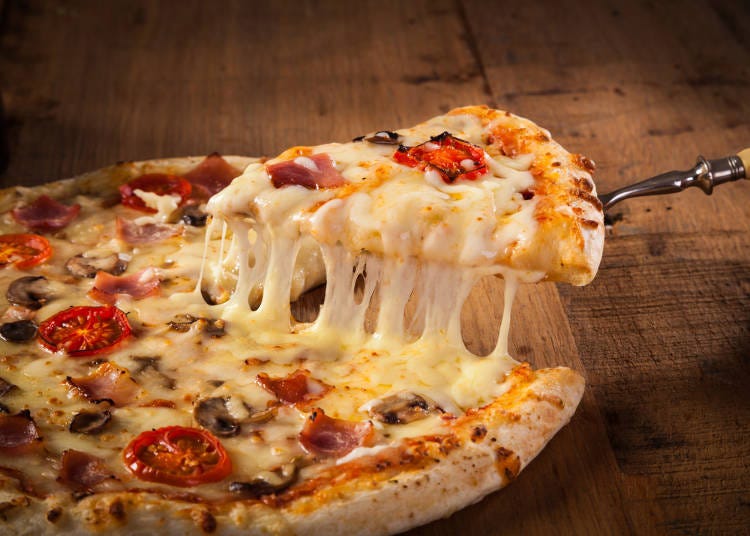
Not only sushi and cars belong to Japan’s most famous export products. Once a niche category in specialized comic stores, manga, Japanese comics, continue their triumph as they can now be found in more and more book stores all over the world. In fact, manga has become both synonym and ambassador for the modern and pop side of Japan’s rich culture and even is regarded as one of the most important parts of modern Japan by the Japanese government itself.
Especially the younger generations often cite manga and anime as their first contact with Japanese culture as a whole, and many are drawn to Japan by the discoveries and impressions they made with their manga experiences.
International bestsellers are monumentally popular works such as Naruto and One Piece but what kind of manga are really dear to people’s hearts? To look beyond the number of volumes sold, the LIVE JAPAN team asked thirteen different expats living in Japan about their very favorite manga.
Of Angels, Demons, and Death Gods: the Charm of Mythical Manga

In contrast to Japan’s culture, which is influenced by Shinto and Buddhism, the western world is mostly dominated by Christian beliefs. As such, people are generally rather familiar with Christian mythology – angels, demons, and the likes – no matter if they’re religious or not. This is probably why manga utilizing elements of this very mythology are particularly popular with the readership in the west, as it is something that people can relate to.
“Angel Sanctuary is my favorite. Its art is incredibly amazing and I like the story, both having the eternal theme of angels versus demons while tackling many taboos.” (French man in his 20s)
“I like Death Note particularly for its beautiful illustrations.” (Man from the UK in his 30s)
Angel Sanctuary by Kaori Yuki, published by Hakusensha, follows the story of a very diverse set of characters while a conflict of epic proportions brews between the angels of Heaven and the demons of Hell – with a lot of internal intrigues within those two parties to look forward to. Angel Sanctuary is particularly popular and known outside of Japan, often not only praised for its story but for its delicate art.
And who has not at least heard of Death Note by Tsugumi Oba and Takeshi Obata, published by Shueisha? One of the most popular manga series all around the world, there even has been a US-produced live action movie announced just a while ago. Filmed in the United States and Canada, the movie will enjoy its worldwide release on Netflix in 2017 – stay tuned! We’re looking forward to the States’ take on the iconic Japanese manga.
The Lack of Superheroes as the Interesting Standard

Despite the headline, one manga that has made waves all around the world is I Am a Hero by Kengo Hanazawa, published by Shogakukan, a manga that is all about zombies! (Although the Living Dead are officially called ZQN in the work itself.)
But fans of I Am a Hero agree: far more interesting than the zombies themselves are the characters.
“There are a lot of characters in I Am a Hero but every one of them is so realistic and relatable. And no one is a hero.” (Man from the States in their 30s)
While the comic world in the west and particularly in the US does have a great variety of works to offer as well, the most representative are works like Batman, X-Men, or Spider-Man. Everyone is familiar with the common theme of those comics: a special power and overwhelming strength. On the other hand, I Am a Hero centers on the average person that suddenly has to deal with zombies – no superpowers involved, which is likely what makes this work both fresh and relatable.
Sure enough, Hideo Suzuki, the main protagonist of I Am a Hero doesn’t have any superpower whatsoever, he’s just your average middle-aged guy. And while it’s not like regular, relatable, and struggling protagonists like Hideo Suzuki are uncommon in works from the west, you need to dive deeper into the world of comics to find them.
Go and Shogi: Discovering Japanese Traditional Culture via Manga

Of course, manga that deal with the traditional and modern culture of Japan are also in great demand.
“In Hikaru no Go, it was a lot of fun to see the main character, Hikaru, undergo character growth and I was so happy when it got its own anime.” (Woman from Canada in her 20s)
“I love March Comes in like a Lion, as I am a big fan of works that portray a piece of everyday life.” (Woman from Canada in her 20s)
Hikaru no Go by Yumi Hotta and Takeshi Obata, published by Shueisha, is all about the traditional Japanese board game Go, while March Comes in like a Lion by Chica Umino, published by Hakusensha, deals with Shogi, otherwise known as Japanese chess. These two works, having made traditional culture in a modern setting their main theme, aren’t only immensely popular in Japan but also loved by many fans all around the world.
Apart from learning about games such as Go and Shogi themselves, the appeal of manga like these seems to lie with the growth of their characters.
From Dorayaki to Pizza: Iconic Japanese Manga Going International

One iconic work that is known and enjoyed even by those who usually do not read manga at all is Fujiko F. Fujio’s Doraemon, published by Shogakukan.
“I started reading it because of my kids.” (Korean man in his 30s)
“The anime is also broadcast in China, so it is a manga that I knew even before coming to Japan.” (Chinese man in his 30s)
Particularly broadcast all around Asia, Doraemon is one of the first Japanese works that people come in contact with. Especially those with children often come to realize the unique charm of Fujiko F. Fujio’s work by watching and reading it with their little ones.

By the way: when Doraemon started to be broadcast in North America in 2014, small edits were made to fit the regional culture. Doraemon’s favorite food, for example, became pizza, while in Japan he is all about dorayaki, red-bean pancake. While manga connoisseurs might find this culinary change to Doraemon weird, isn’t it a good thing when the robotic cat is embraced lovingly all around the world by sharing their own favorites and customs?
Other famous and noteworthy works that people have named as their favorites are Fullmetal Alchemist (Hiromu Arakawa, published by Square Enix), Yotsuba&! (Kiyohiko Azuma, published by Kadokawa), and Natsume’s Book of Friends (Yuki Midorikawa, published by Hakusensha). Undoubtedly, Japanese manga are a massive global phenomenon, one that has as many different works to offer as it has fans! We’re looking forward to see what the next big hits will be!
Do you have a favorite Manga? Share your likes with us on Twitter at @LiveJapanGuide!
*Prices and options mentioned are subject to change.
*Unless stated otherwise, all prices include tax.
Popular Tours & Activitiess
Recommended places for you
-
Appealing

Rukku and Uohei
Izakaya
Sapporo / Chitose
-

Jukuseiniku-to Namamottsuarera Nikubaru Italian Nikutaria Sannomiya
Izakaya
Kobe, Sannomiya, Kitano
-
Goods

Yoshida Gennojo-Roho Kyoto Buddhist Altars
Gift Shops
Nijo Castle, Kyoto Imperial Palace
-

Kambei Sannomiyahonten
Yakiniku
Kobe, Sannomiya, Kitano
-

Kanzenkoshitsuyakinikutabehodai Gyugyu Paradise Sannomiya
Yakiniku
Kobe, Sannomiya, Kitano
-

ISHIDAYA Hanare
Yakiniku
Kobe, Sannomiya, Kitano
-

Jujutsu Kaisen Takes Over JR East With a Wrapped Shinkansen This Winter
by: Guest Contributor
-
Ad

Preserving the Beauty of World Heritage Site Shirakawa-go for the Future Through Responsible Travel
-

How to Get Don Quijote's Exclusive 2025-2026 Winter Gift (+Tax-Free Savings)
-

This Winter, Godzilla Takes Over Haneda Airport
by: Guest Contributor
-

Strawberries, Style, and Tokyo’s Coolest Neighborhood: Winter Afternoon Tea in Kichijoji
by: Guest Contributor
-
Ad

Discover the "Miraculous Forest" in the Heart of Tokyo: The Institute for Nature Study (9 Minutes from JR Meguro Station)
-

These 18 Things to Do in Hakodate Will Make You Fall in Love With the Northern Wonderland
by: Guest Contributor
-

5 Best Hotels Near Universal Studios Japan (Osaka): Top-Rated Places to Stay
by: WESTPLAN
-

8 Unfamiliar (But Totally Normal) Customs in Japan!
-

Solo Traveling: Enjoying a Tasty Night Out in Tokyo!
-

What Kind of Flowers Grow in Hokkaido and When are the Best Times to See Them?
-

Shock Gourmet: American/Italian Impressions of Quirky Japanese Food!
- #best sushi japan
- #what to do in odaiba
- #what to bring to japan
- #new years in tokyo
- #best ramen japan
- #what to buy in ameyoko
- #japanese nail trends
- #things to do japan
- #onsen tattoo friendly tokyo
- #daiso
- #best coffee japan
- #best japanese soft drinks
- #best yakiniku japan
- #japanese fashion culture
- #japanese convenience store snacks












